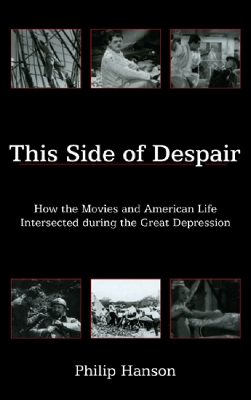During the Great Depression, economic, political, and social crises converge with a rapidly expanding movie industry to create a product that offers a unique history of the period. The Depression crisis could suddenly revise one's identity. In The Grapes of Wrath, Tom Joad takes umbrage at brusque treatment from a gas station attendant. He reproves the man with the reminder, 'We ain't bums, you know.' This is a tricky piece of logic. The family is unemployed, has been evicted from their home, and is out on the road. They are pretty close to being bums. But the rapidity and unexpectedness of the transition has left them unprepared and incapable of admitting it. This moment in the film captures a transformation experienced by many others. Depression-era films uncover a collective consciousness and a collective unconsciousness over the effects the Depression was having on the American psyche. The power of the Depression to throw into question traditional institutions and behaviors in direct and indirect ways finds its way into the films of the period. Depression-era movies exist as a particular kind of record of the crisis and its effects on such diverse social elements as gender roles, racial constructions, the rise in the thirties of isolationism, escapist dreams of the period, and anxieties over the nature of capitalism itself. This book studies thirties films as a unique and sometimes camouflaged record of the great crisis. In no other period do films engage with the nation's sheer economic anxiety.
- ISBN10 1611473551
- ISBN13 9781611473551
- Publish Date 1 July 2008
- Publish Status Active
- Publish Country US
- Imprint Fairleigh Dickinson University Press
- Format Hardcover
- Pages 247
- Language English
